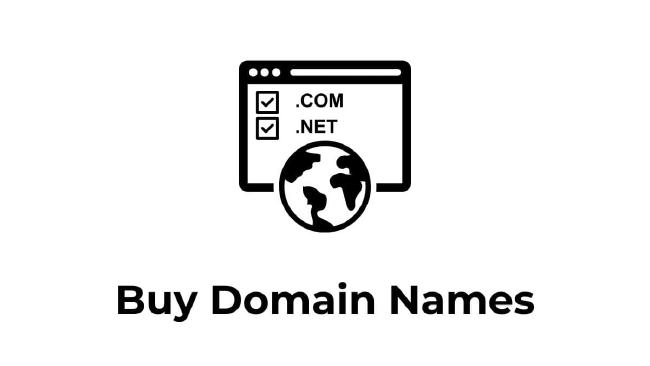Ultimate Guide to Build Online Stores
In the rapidly evolving landscape of e-commerce, launching an online store has become a cornerstone of entrepreneurial endeavors. This comprehensive guide serves as your compass, navigating the intricate pathways of establishing a thriving online business. Whether you're an aspiring entrepreneur or a seasoned professional venturing into the digital realm, this guide is tailored to equip you with the knowledge, tools, and strategies essential for building online stores.
Basics of Ecommerce
Before diving into the intricacies of launching your online storefront, it's essential to grasp the fundamental concepts and principles that underpin the world of e-commerce.
- What is E-Commerce: Learn the basics of electronic commerce and principles of online business transactions.
- The Evolution of Online Shopping: Explore how online shopping has transformed over time and its impact on retail.
- Benefits of Starting an Online Store: Discover the advantages and opportunities of establishing an internet-based retail business.
- Key E-Commerce Terminology: Familiarize yourself with essential terms and concepts used in the world of electronic commerce.
How to Build the Best Online Stores
Developing an online store is a multifaceted endeavor that requires careful planning, technical expertise, and a customer-centric approach. By selecting the best ecommerce platform , designing a user-friendly interface, curating quality products, and implementing effective marketing strategies, you can create an online store that not only reflects your brand but also provides a seamless shopping experience for your customers.
1. Setup Your Store
Once you've chosen a platform, it's time to set up your storefront. Begin by selecting a domain name that reflects your brand identity and is easy for customers to remember. Next, customize your store's design by choosing a theme that aligns with your brand aesthetic and provides a seamless user experience.
Upload high-quality product images and write compelling product descriptions to showcase your offerings effectively. Organize your products into categories and create clear navigation menus to help customers find what they're looking for quickly and easily.
2. Design Your Online Store
Once you've chosen your platform, the next step is designing your online store. A well-designed store not only looks professional but also enhances the user experience, leading to higher conversion rates.
3. Integrating Payment Gateways
To accept payments from your customers, you'll need to integrate a payment gateway into your digital store. Most ecommerce platforms offer built-in integration with popular payment processors such as PayPal, Stripe, and Square. Research each option to determine which one best meets your needs in terms of transaction fees, security features, and supported currencies.
Ensure that your payment gateway is secure and compliant with industry standards to protect your customers' sensitive information and build trust in your brand.
4. Implementing Ecommerce Marketing Strategies
Once your store is set up, it's crucial to [implement ecommerce marketing strategies]. Techniques such as SEO, social media marketing, and email campaigns are vital. They help increase visibility and drive traffic to your site. Consistent analysis and optimization of these strategies ensure continued growth and success. online business marketing tips to boost your online presence.
Create high-quality, original content such as blog posts, tutorials, and product guides to engage your audience and establish your authority in your niche. Leverage social media channels and email marketing campaigns to promote your content and attract potential customers.
5. Sell Your Products
Selecting where to sell products is crucial to your store's success. There are many options available, each with its unique features and benefits. Here are some of the best e-commerce platforms to consider:
- Sell on Shopify: Shopify is one of the most popular e-commerce platforms, known for its user-friendly interface and extensive app store. With over 1 million businesses selling products on Shopify , it's a proven platform for success.
- Promote Products on WooCommerce: WooCommerce is a powerful WordPress plugin that allows you to turn your WordPress site into a fully functional e-commerce store.
- List Items on BigCommerce: BigCommerce offers a comprehensive solution for larger businesses with advanced needs.
- Sell Stuff on Magento: Magento is an open-source platform designed for developers and businesses with complex requirements. It offers unparalleled customization but may require technical expertise to manage.
6. Monitoring Performance and Making Improvements
Once your online store is up and running, it's essential to monitor its performance regularly and make necessary improvements to enhance the user experience and maximize sales. Track key metrics such as website traffic, conversion rates, and average order value to identify areas for optimization.
Collect feedback from your customers through surveys, reviews, and customer support interactions to gain insights into their preferences and pain points. Use this feedback to refine your product offerings, marketing strategies, and overall business operations.
7. Explore Ecommerce Tips
Investing in education can provide valuable insights and skills to enhance your e-commerce business. Here are a few ecommerce tips to consider:
- E-Commerce Marketing by Udemy
- Shopify Academy
- Google Analytics for Beginners by Google
- Facebook Ads for E-Commerce by Skillshare
- E-commerce SEO Mastery by Coursera
Secondly, Explore B2B e-commerce . While most people think of e-commerce as B2C, B2B e-commerce is a growing sector with significant opportunities. B2B transactions often involve larger order volumes and long-term contracts, making it a lucrative market.
Lastly, learn how to start freelancing in e-commerce. There are several freelance avenues to explore, i.e., web development, digital marketing, content creation, graphic design, virtual assistance and more.
Conclusion
Building an ecommerce store requires careful planning, attention to detail, and a commitment to providing exceptional customer experiences as noted earlier. By following a gameplan, you can create a successful ecommerce store that stands out in a competitive online marketplace.
Remember to stay informed about the latest trends and technologies in ecommerce and continuously adapt and evolve your strategies to meet the changing needs of your customers. With dedication and perseverance, your ecommerce store has the potential to thrive and grow into a profitable business venture. Now that you have the knowledge and tools you need to get started, take the first step towards building your dream ecommerce store today!
Related Posts
Highest Paid Bloggers
In the dynamic world of blogging, a select few have risen to the top, turning their passion for writing into lucrative careers. This article delves into the lives and earnings of the highest-paid bloggers, explores the various monetization methods they employ, and provides insights into how they transformed their blogs into successful businesses.
Read more39 Ways to Earn Money in 60 Minutes
In today's digital age, there are numerous ways to earn money online quickly. You can earn money selling stock photos, renting out your driveway, participating in focus groups and more. Each method is designed to be practical and easy to implement, making it perfect for anyone looking to boost their income in a short amount of time.
Read moreHow to Buy Domain Names
In the digital era, selecting the right platform for purchasing domain names is a critical step in building a strong online presence. The decision impacts not only the ease of managing your domain but also the level of support and features you receive.
Read more


